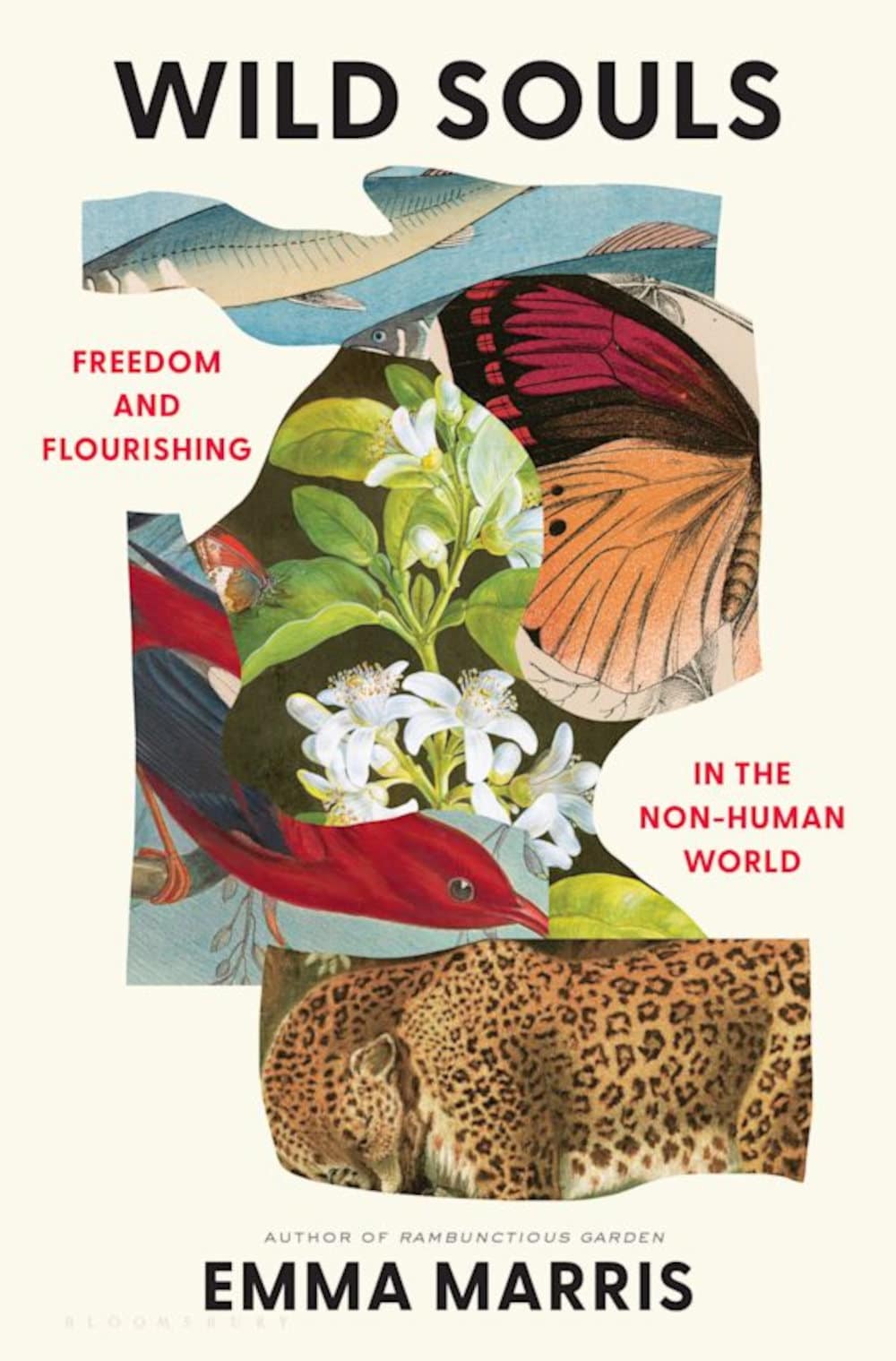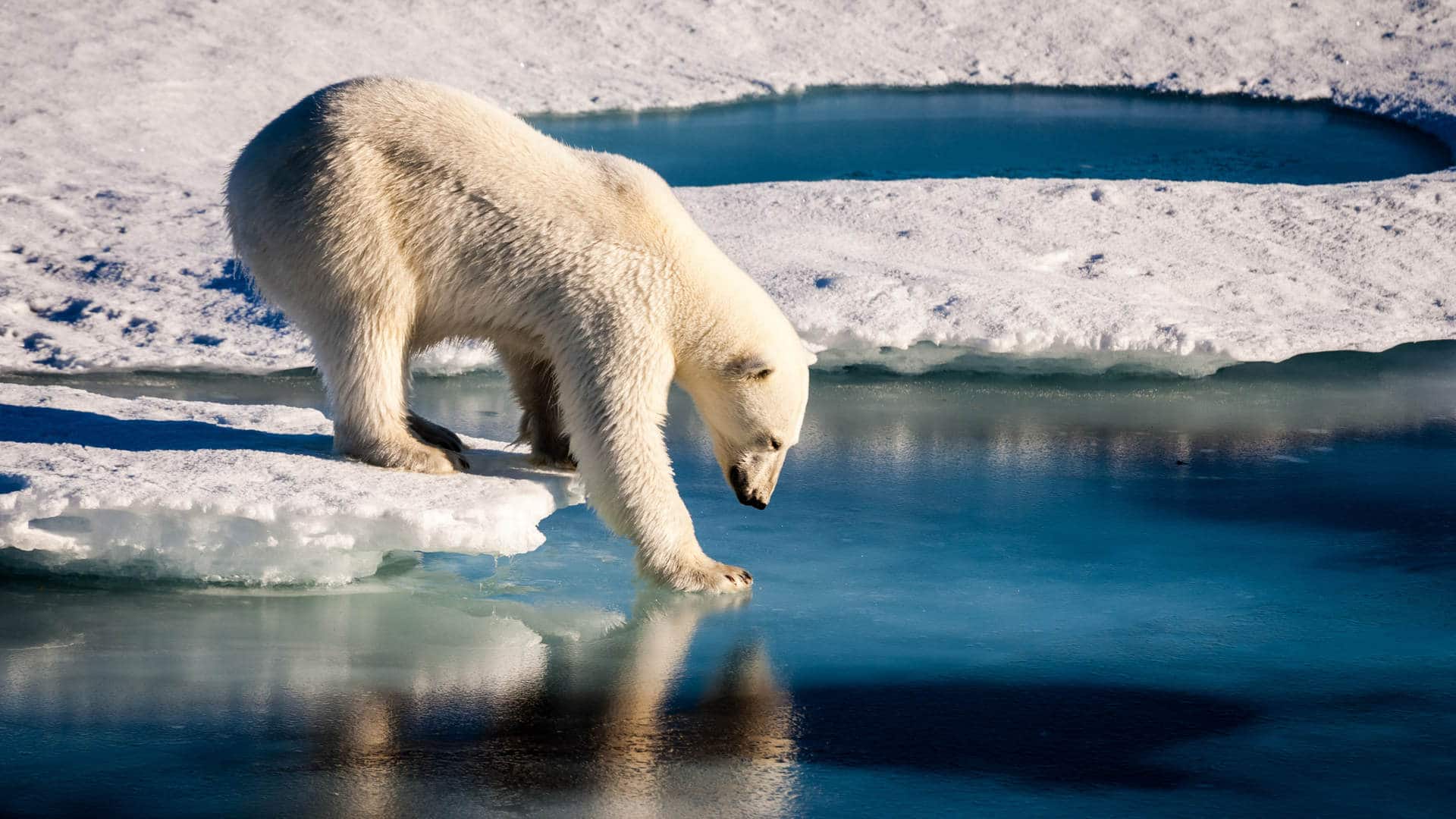I was once challenged by a friend to explain why it matters if species go extinct. Flustered, I launched into a rambling monologue about the intrinsic value of life and the importance of biodiversity for creating functioning ecosystems that ultimately prop up human economies. I don’t remember what my friend said; he certainly didn’t declare himself a born-again conservationist on the spot. But I do remember feeling frustrated that, in my inability to articulate a specific reason, I had somehow let down not only myself, but the entire planet.
The conversation would have gone very differently had I already read environmental journalist Emma Marris’s “Wild Souls: Freedom and Flourishing in the Non-Human World,” a razor-sharp exploration of the worth of wild animals and the species they belong to, and the responsibility we have toward them. “I wanted to know whether the massive human impact on Earth changes our obligation to animals,” Marris writes. “Our emotions about animals have always been strong, but are our intuitions about how — and whether — to interact with them still correct?”

BOOK REVIEW — “Wild Souls: Freedom and Flourishing in the Non-Human World,” by Emma Marris (Bloomsbury Publishing, 352 pages).
As Marris details throughout the book, while there are good reasons to value animals as individuals, there is in fact no unassailable single reason to protect species. However, that realization does not mean we shouldn’t do so, only that we should go about it in a more thoughtful way, with an eye also toward individuals. Ultimately, Marris argues that it’s time to renegotiate our approach to wild animals and conservation to better match the realities of our human-dominated world.
At the heart of “Wild Souls” is the tension that often exists between acting in the best interest of an individual wild animal and acting in the best interest of their overall species or environment. These things do not always line up, practically or morally. “That tension hinges on trying to compare two very different things,” Marris writes. “In some ways, this is the toughest problem of all.”
Arguing for the worth of individual creatures, Marris points to a mounting body of scientific evidence showing that many nonhuman animals are “smart, emotional, and even kind,” with rich inner lives. These animals are sentient beings, she writes — selves. Given this, ethical arguments can be made for individual animals’ rights to flourish and to live autonomous lives. This applies whether the life is that of a tiger or a mouse. “We are used to common things being cheap and rare things being valuable,” Marris writes. “But selfhood is both common and priceless.”
On the other hand, the same ethical arguments cannot be made for the obligation to ensure species thrive, especially if this comes at a cost to individuals. While “many of us have a deeply felt intuition that causing a species to go extinct is wrong,” Marris writes, “‘species’ is an abstract concept” that simply encompasses a basket of animals that share a certain set of traits at a given time. “The basket itself is not sentient, cannot suffer or feel pleasure, and is not alive,” she writes.
Evolution — the process that wove the species basket — is likewise not inherently “good,” Marris continues, but rather “is just time and sex and death and mutation and chance.” While arguments can be made for why a particular species is important to humans, she concludes, it’s more difficult to find a rational justification for why a species or ecosystem has any intrinsic or objective final value beyond the individual animals it comprises.
Rationality aside, though, Marris, admits that she is deeply drawn to biodiversity — that “there’s something precious in what we call ‘nature,’ in the flow of energy, in the will to survive, in the way a lupine leaf holds a perfect sphere of rain.” She allows that overwhelming, logic-based justifications for protecting species are perhaps not necessary. Human passion alone can be reason enough to value the well-being of a rare species, even if it takes precedence over individual lives of members of that species or others.
On their own, these tensions can sound abstract. Marris gets around this by grounding the reader in real-world case studies on a number of topics, including keeping animals in zoos for educational purposes; supplemental feeding to sustain imperiled wild animals; captive breeding to bolster threatened populations or to secure genetic life rafts; and the practice of hunting as an ecological tool. As Marris explains, “I tried to look at these activities through the eyes of the individual animals as well as the framework of protecting species.”
Captive breeding, for example, usually benefits the species to the detriment of individuals, which must undergo the stress of capture and captivity — and sometimes wind up inadvertently losing their lives along with their freedom. “It’s an exercise in total domination, undertaken as part of a larger cultural project of stopping extinctions, which is arguably an attempt to reverse or reduce human domination over Earth,” Marris writes. While captive breeding does sometimes work, “does saving the kind justify restricting the autonomy of the individual?” she asks.
In the case of the California condor, the answer seems to be yes. In 1987, scientists captured the last of the world’s remaining wild condors for a captive breeding program that consisted of just 27 birds at the time. Although they were forced to forfeit their freedom, the birds likely would not have survived in the wild for much longer on their own, given the high mortality rates caused by the prevalence of lead shot in animal carcasses they were feeding on. Additionally, the species, which now numbers more than 300 in the wild, almost definitely would not have survived without intervention. So in this case, the program’s success, paired with the value of condors to humans, does seem to justify “any suffering and loss of autonomy experienced by the captured birds, especially since the levels of suffering seem quite low in this case,” Marris writes.
Marris suggests, though, that there should be limits to how far we go to protect biodiversity. This becomes particularly true, she writes, in instances when “we value ‘naturalness’ so highly that we become willing to hurt and kill animals to protect it.” Humans kill hundreds of thousands of invasive species each year, Marris estimates, and the ethics of lethal control can be weighed in a number of ways. In some cases, this method can be warranted: for example, in protecting an endangered species that humans are passionate about and that lives (or grows) on an island that is small enough for eradication of the invasive species to be done humanely. In other cases, though, killing invasive species solely on the basis of being invasive means depriving rats, feral cats, rabbits, possums, pythons, and other creatures — none of which maliciously chose to be born in a spot they did not evolve to occupy — years of life, without obvious justification.
Invasive species eradication also raises questions of where to draw the line on how we define natural. Over time, invasive species adapt to their environment and even evolve into new species, setting a new definition of natural. Climate change is also shifting many species poleward, causing “the idea that everything ‘should’ stay in its native range” to become “increasingly untenable,” Marris writes. As grizzly bears move north, for example, they are beginning to hybridize with polar bears, challenging “our cultural notions of discrete species and stable ecosystems.” Should the hybrid bears be shot, Marris asks, or “left alone to mate how they please, to respect their sovereignty?”
Support Undark MagazineUndark is a non-profit, editorially independent magazine covering the complicated and often fractious intersection of science and society. If you would like to help support our journalism, please consider making a tax-deductible donation. All proceeds go directly to Undark’s editorial fund. |
Perhaps the best way to save the polar bear from climate change’s deleterious impacts, she adds, is simply to “let it access the gene pool of its more flexible terrestrial cousin.”
Marris readily admits that she does not have all the answers, and that, in many cases, an answer that will simultaneously serve individual animals as well as species and ecosystems probably does not exist. What she does provide, though, is a useful set of guidelines that readers and society at large can adopt to more rigorously evaluate our attitudes toward wild animals, species, and the natural world.
As Marris argued in her 2013 book, “Rambunctious Garden,” and continues to build on in “Wild Souls,” the outdated notions of naturalness, wildness, purity, and ecological and genetic integrity — as often defined by a lack of anthropogenic influence pinned to some pre-colonial, frozen period of time — are not valuable or useful lenses through which to view environmental questions and decision-making. A more helpful and realistic set of considerations, she writes, would include the flourishing of sentient creatures, human compassion, and humility, the flow of matter and energy between living things, and biological diversity.
“Taken together, I believe these values suggest that in a humanized world, we owe nonhuman animals respect and compassion, plenty of space, a climate that is not changing too quickly, and — in some cases — intervention to help them deal with environmental challenges caused by humanity,” Marris writes. And while our “reverence for the web and flow of life” may sometimes lead us to hurting or killing animals to protect a species or ecosystem, “we must not take life lightly.”











Comments are automatically closed one year after article publication. Archived comments are below.
I prefer the Myth of the Untouched Country and a study of the Royal Forests to understand this nonsense. We have been modifying our environment for thousands of years (the Amazon is dominated by species selected and planted by pre Columbian humans) an untouched forest is an elitist conceit – we should log it all, sustainably of course: if the mature forest is 200 to 400 years old we should remove 1/200th to 1/400th per annum. Disturbance is natural and increases biodiversity. There are no ecological arguments for national parks or leaving old growth to rot
I believe you’re making this way too complicated, mainly because you’re being utilitarian, the same mode of thinking that unbridled capitalism, our culture’s highest value, uses to rationalize killing nature. This is an old environmentalist dilemma, a battle that cannot be won on the turf of the enemy.
Rather, we must hold respect as the highest value, revere and protect, with our bodies, the fellow beings and the earth we share, not rule over. We take only what we need for survival, which eliminates almost all of the crap humans produce now.
This is not a coldly rational, scientific pursuit. You must find the good – be it evolution or a spiritual connection – and be it, not argue with deaf fools about it.
The Myth of the Untouched Country is a monarchist myth: take Vanderbilt for instance, bought out 700 farms (including five villages) so that he could own the land “as far as the eye could see” and modified it to look like a royal forest. There may be reason to protect wetlands and riparian areas but most of the “old growth” you see happened after we extirpated the civilizations that had been managing it. As for capitalism there is only power – a circle with fair government at the top, totalitarian at the bottom, you can go right or left to go down, but the pattern (the needle on this compass, as it were) is the rule of law. Which does not mean courts and police (any tin pot dictator can have those) it means the law applies to the wealthy and powerful. The method of concentration does not matter – capitalism, monarchy, socialism, communism have all accumulated too much power to too few people in the past. So enough with the snobby put down of capitalism, it doesn’t make you an intellectual (although it will get you invited to certain faculty soirees, if that’s your thing) capitalism and socialism are both tools, not the end goal.
The world only cares about breeding and building places to live not preserving but extinction. We may have different names Neanderthal, Homo Erectus, Homo Sapiens, but no matter the name…our species causes extinctions by ignorance, poaching, and a disregard for the planet.